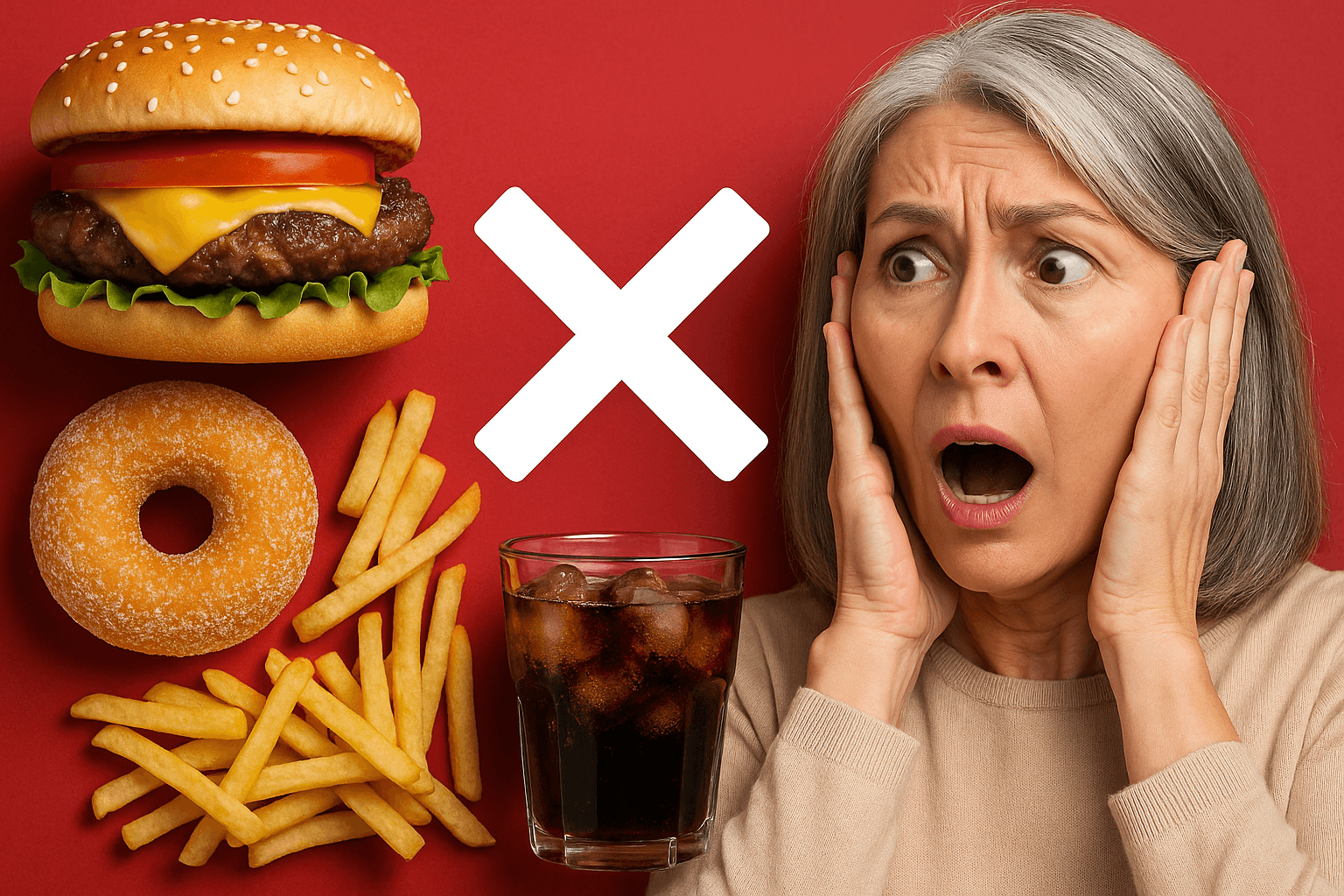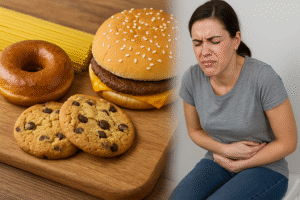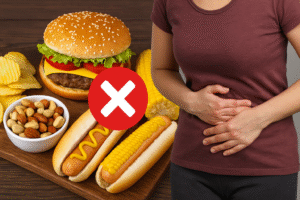As we grow older our bodies begin to change in ways we may not expect. Our metabolism can slow, our hormones change, we start to lose muscle more readily than we did before. That’s why what you eat after 45 matters more than ever. A handful of foods that seemed perfectly “fine” in our 30s can actually be more harmful than beneficial as we enter our mid-40s. But don’t worry — you can stay energized, achieve and maintain a healthy weight, and feel 10 years younger at any age by making smart nutrition choices.
Why 45 Is a Dangerous Age for Your Health
Just consider your body a car. When fresh out of the box, it might get by on the occasional oil change. But with miles piling up, maintenance becomes more important. Your body, after 45, processes food a bit differently:
- Metabolism slows – The body no longer burns extra calories as easily.
- Decreased muscle mass – As we age, our bodies lose muscle mass, which can impact our strength and metabolism.
- Elevated risk for chronic conditions – Conditions such as heart disease, diabetes and high blood pressure begin to show up more frequently.
That’s why an emphasis on nutrition is crucial. Some foods can indeed make these problems worse, but others can help you stay healthy and strong.
Top Foods to Avoid After 45
Let’s explore the worst of them lurking in your kitchen. Slashing that kind of excess can significantly benefit your health — perhaps more than you realize.
Sugary Drinks
If you’re still guzzling sodas, sweet teas or sugary coffees every day, it might be time to reconsider what you’re drinking. There’s so much sugar and empty calories in these drinks! They cause your blood sugar to spike and then crash, and you feel tired and hungry.
Why they’re an issue at 45:
- Can lead to weight gain
- Increase your risk of type 2 diabetes and heart disease
- Offer zero nutritional value
Consider substituting soda for flavored water, herbal tea or sparkling water with a little lemon or lime.
Ultra-Processed Meats
(to think of bacon, sausages, hot dogs and deli meats.) Yes, they’re convenient, yes, they taste good, but most of them are full of sodium, preservatives and saturated fats that are terrible for your heart and your digestive system.
Did you know? The animal products cut out (like red meat) are associated with a greater risk of cancer, heart disease, and even cognitive decline.
Opt for low-fat proteins such as chicken breast, turkey or plant-based options like beans and lentils.
White Bread and Pastries
Your 20s may have been all about white bread, white pasta and white rice, receiving nutrition if not nourishment from the foods on this list, but when you reach 45, it’s time to tell your diet to grow up. These foods are stripped of fiber and nutrients during processing and can lead to spikes in blood sugar.
So what happens if you keep eating them?
- Increased blood sugar and insulin concentrations
- Increased belly fat
- Slow digestion (less fiber = slow colon) Read Sluggish Digestion for more on flow.
Simple swap? Opt for whole grain varieties instead. Whole-wheat bread, brown rice, and quinoa are all good sources of fiber to keep you full and aid in digestion.
Fried Foods
French fries, fried chicken, onion rings — they’re crispy and comforting but they’re also nutritional nightmares, particularly after 45. Most fried foods are made in oils that are heavy in trans fats, which will boost the bad kind of cholesterol and lower the good.
Plus: Fried food can cause inflammation in the body, which has a massive role to play in aging and chronic conditions, such as arthritis and heart issues.
Craving crunch? Rely on oven-roasting the vegetables, or air-fry them with a drizzle of olive oil.
Heavy Alcohol Consumption
Let’s not get carried away — moderation in all things. An occasional glass of wine? No problem. But regular or binge drinking does a number on your liver, particularly as you get older.
After age 45, your liver slows down, too, and it becomes more difficult to flush out toxins. Too much booze can interfere with sleep, memory, mood, weight and even your ability to visit the gym.
You might also want to try noticing how much you drink and having some alcohol-free days each week to give your body a break.
High-Sodium Foods
Frozen dinners, canned soups, sauces and bagged snacks are especially bad at hiding enormous amounts of salt. And that’s bad news for your blood pressure and heart health.
Fun fact: Try to consume less than 2,300 mg of sodium per day — about one teaspoon of salt in total!
To cut down on salt:
- Season with herbs and spices
- Read labels when shopping at the market
- Eat at home more often so you know what’s in your food
Better Foods = Better Aging
No need to feel discouraged. Little things can make a big difference. Consider incorporating a couple more whole foods and swapping just one or two processed foods per week.
Here are some age-friendly food swaps that could be just the ticket:
- In place of chips: Sliced veggies with hummus
- Skip white rice: Opt for quinoa or cauliflower rice.
- Instead of ice cream: Choose Greek yogurt and fresh berries
As a 40-something, let me tell you these tweaks add up. I would pick up a soda every afternoon for the jolt. But the more I consumed green tea, the more I found my sugar crashes became less severe and my focus improved. You can really tell the difference when you treat your body better.
Final thoughts: What to keep in mind going forward
The way to care for your health past 45 isn’t by banishing all your favorite foods forever. It’s about making better decisions more often. Awareness is powerful. You can begin to choose what helps your body when you’ve identified what hurts it.
Ask yourself:
- How does this food make me feel later when I’ve eaten it?”
- Is this going to make it more challenging for me or easier in the long run?
With every mouthful, you’re either feeding disease or fighting it. So feed your future with each meal.
Your body is your forever home — you are worth taking care of it, one choice at a time.
Ready to Make a Change?
What’s one food you can pledge to cut down on this week? Tell us in the comments — and here’s to aging well, together!








